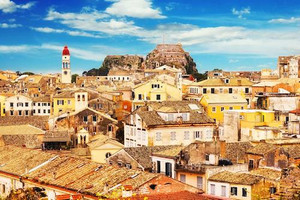
It straddles the magnificent Bosphorus River, and is a link between Europe and Asia, making Istanbul a unique port of call that few cities in the world can match.
The Facts
Location: Northwestern Turkey.
Language: Turkish.
Currency: Turkish Lira.
Docking/Anchoring: Most ships dock at the Karaköy Yolcu Salonu passenger terminal on the waterfront of Bosphorus Strait near the city centre.
Transport: There are plenty of taxis around the port and the tram system is cheap and easy to use. It’s also possible to get around from the port on foot.
Overview
Sailing into, or out of, Istanbul is an experience which goes some way towards gaining a sense of its rich history. However, another key reason why this is one of the most popular ports of call in the world, is that many of its main attractions are within easy striking distance of where most cruise ships dock. The city’s strategic location has attracted many marauding armies over the centuries, with the Greeks, the Romans and the Venetians taking turns in ruling it before the Ottomans finally took charge, and stayed. Reminders of their various tenures are found all across the city in both Istanbul’s architecture and its key sights, along with a cultural diversity that it retains to this day. For cruise passengers it makes for both fascinating and convenient explorations.
Don’t Miss
The Blue Mosque stands out against the cityscape more than any other mosque because it’s one of the biggest in Istanbul, and with six minarets it is truly a unique structure. Built between 1606 and 1616, most people don’t realise it is actually 1,000 years newer than Saint Sophia which sits right across the road.
Saint Sophia, which is also known as Hagia Sofia, Sancta Sophia and the Church of the Divine Wisdom, is a Byzantine church and one of the largest ancient buildings in the world. It was completed in 532 during the reign of the Christian Roman Emperor Justinian and is considered the most important pieces of Byzantine art and Eastern Christian church architecture.
Topkapi Palace is Turkey’s leading museum and formerly the Imperial residence of the Great Ottoman Empire for almost 400 years after it was built in 1465. It’s a sprawling complex made up of four main courtyards and dozens of smaller buildings.
Best Photo Op
Besides the sail in or sail out, depending on the time of day your ship arrives and departs, from most ferries criss-crossing the Bosphorus River, you can catch the skyline of the Old City with the river in the foreground.
Shopping
The Grand Bazaar is one of those places that has to be seen to be believed and you could easily wander the chaotic labyrinth all day long and still only cover a small section of this surreal place. It’s the heart of the Old City with more than 2,000 shops with tiny boutiques and workshops, artworks and, of course, rugs. Haggling is accepted and expected, but be warned as some of the shop owners, especially the carpet salesmen, can be quite pushy when they spot a tourist.
Food and Drink
Eating out in Istanbul is an adventure and experience in itself, and the Grand Bazaar is a good place to get started if you’re only in town for a day. The country’s colourful history means the cuisine is a real mix but everywhere you go it seems as though something authentic is available. This is where you’ll find the wides array of fantastic bread (a tradition for breakfast), mezze including hummus, baba ganoush, stuffed grape leaves, fried eggplant, beautiful cheeses, kebabs, Turkish ravioli and some excellent seafood. Tea drinking is also a major ritual here in Istanbul and it seems like all the locals are indulging 24/7. The apple tea is one of the most popular teas in Turkey. The local beer, Efes is one of them, is really good and Turkish wines are also becoming recognised internationally.
Pick of the Excursions
If you are a first-time visitor, a city tour will get you around most of the major sights, including the Blue Mosque, Saint Sophia and Topkapi Palace.
Some tours also take in some of Istanbul’s other historic monuments like the Hippodrome and Underground Cistern. The Byzantine Hippodrome was once the heart of Constantinople's political and sporting life, and the scene of games through the history of the Byzantine Empire. The Underground Cistern is an underground reservoir dating back to the 6th century. This "Underground Palace" prides itself on a roof supported by 336-Corinthian columns.
A popular alternative, however, is a visit to the Ottoman Palaces, Dolmabahce and Beylerbeyi, followed by a dinner on the Bosphorus River.
- By:
- Joanna Hall






